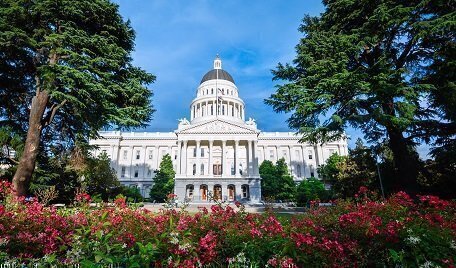On Tuesday, California’s secretary of state announced that enough petition signatures were certified to place an initiative on this fall’s ballot to divide the Golden State into three states. How realistic is this proposal and what are the constitutional hurdles?
 In the memo from Alex Padilla, his office confirmed that Initiative: #1814, Related to the Division of California would appear on the “November 6, 2018, General Election ballot and all further signature verification can be terminated.”
In the memo from Alex Padilla, his office confirmed that Initiative: #1814, Related to the Division of California would appear on the “November 6, 2018, General Election ballot and all further signature verification can be terminated.”
Per the Los Angeles Times, more than 200 attempts have been made since 1849 to divide California into multiple states. Obviously, not one has been successful yet, but the latest effort will have a date with voters in November – unless a legal challenge arises.
Investor Tim Draper is backing the effort, and last year he told the Times that carving California into three states had its merits. “Three states will get us better infrastructure, better education and lower taxes,” he said in an email to the newspaper.
And in fact, the idea of creating a new state from an existing state isn’t novel. The Constitution grants general state-creation powers to Congress in Article IV, Section 3, under the Admissions Clause, which says that “New States may be admitted by the Congress into this Union; but no new State shall be formed or erected within the Jurisdiction of any other State; nor any State be formed by the Junction of two or more States, or Parts of States, without the Consent of the Legislatures of the States concerned as well as of the Congress.”
Two states have been formed since 1789 by a legally approved secession process from an existing state. In 1820, Maine was created as a state independent of Massachusetts, as part of the Missouri compromise. And in 1863, West Virginia became a state during the Civil War under unusual circumstances, after a Union-approved government was named for Virginia, from which West Virginia then seceded. (Tennessee, Kentucky, and Vermont also had their origins in existing states before admission to the United States.)
Draper’s plan creates three states anchored by major cities: California (Los Angeles), North California (San Francisco), and South California (San Diego). On a federal constitutional level, that division creates several major political obstacles.
In the United States Senate, four more members would need to be added. That prospect has been enough to realistically thwart any long-term efforts to add Puerto Rico or the District of Columbia as new states. And the allocation of California’s 55 electoral college votes could be altered if the Republicans can win one of the three new states in a presidential election.
The idea of adding new Senators was strong enough to derail efforts to add Alaska and Hawaii as states for years. The compromise involving President Dwight Eisenhower and Senate Majority Leader Lyndon Johnson was founded on the belief the two new states would bring in an equal number of Democrats and Republicans into the Senate in 1959.
Scholar Vikram David Amar from the University of Illinois has written about the California statehood proposals. Amar sees at least three separate federal constitutional problems outside of the political issues of representation. Two questions center on the ability of a popular voter initiative to start the statehood process, and the need for residents within the three proposed new states to also approve statehood in a separate set of ballots.
Amar also points to arguments made by scholars such as Michael Stokes Paulsen that a proper original textual reading of Article IV, Section 3, indicates that the clause's second semi-colon presents “the distinct possibility- … that Article IV, Section 3 therefore prohibits the creation of new States exclusively from within the boundaries of existing ones.”
Amar also believes the legal challenges within the current state courts are significant. “I think that a proposal such as Mr. Draper’s may constitute an attempt to create a ‘revision’ to rather than an ‘amendment’ of California’s Constitution, which would require a more involved process than the simple gathering of signatures and placement on the ballot Mr. Draper is pursuing,” Amar said in a blog post last August.
Despite the odds, the “Cal-3” initiative is moving forward, and it will likely to be subject to an interesting debate among scholars in the coming months.
Scott Bomboy is editor in chief of the National Constitution Center.






